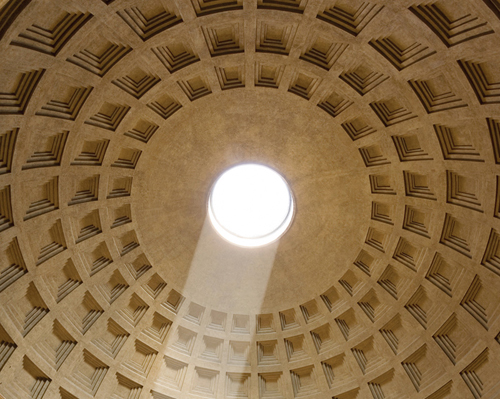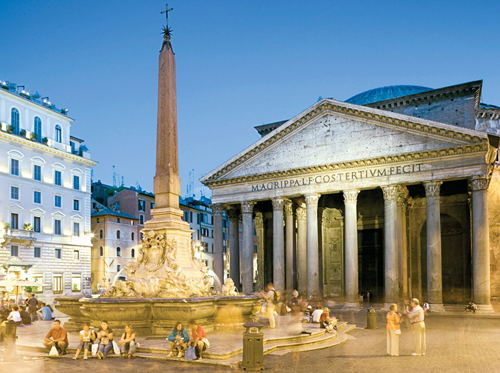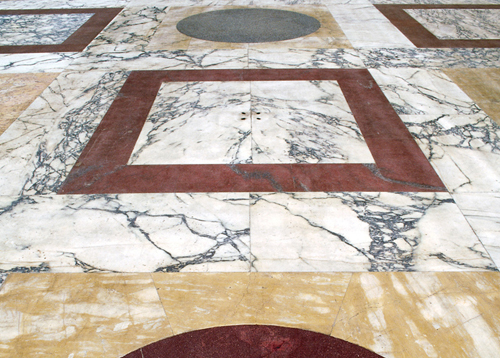The Pantheon
When Emperor Phocas donated this pagan temple to Pope Boniface IV in 608, he unwittingly ensured that one of the marvels of ancient Rome would be preserved, virtually unaltered, in its new guise as the Christian church Santa Maria ad Martyres. Emperor Hadrian, an amateur architect, designed this lovely structure in AD 118–125. It has been lightly sacked over the ages – barbarians took portable pieces, Constans II stole its gilded roof tiles and, in 1625, Urban VIII melted down the portico’s bronze ceiling panels to make cannon for Castel Sant’ Angelo. Yet the airy interior and perfect proportions remain, a wonder of the world even in its own time.
Piazza della Rotonda
|
The First PantheonEmperor Augustus’s son-in-law, Marcus Agrippa, built the first Pantheon in 27 BC, replaced in AD 118-125 by Hadrian’s rotunda. The pediment’s inscription “M. Agrippa cos tertium fecit”(“M. Agrippa made this”) was Hadrian’s modest way of honouring Agrippa. The pediment also provided the illusion of a smaller temple, making the massive space inside even more of a surprise (the Pantheon was originally raised and you couldn’t see the dome behind). Bernini’s “ass ears”, tiny towers he added to the pediment, were removed in 1883. |

|
|
|
Top 10 Features
Doors
The massive bronze doors are technically original, but were so extensively renovated under Pius IV (1653) they have been practically recast.
Royal Tombs
Two of Italy’s kings are honoured by simple tombs. Vittorio Emanuele II (1861–78) unified Italy and became its first king. His son, Umberto I, was assassinated in 1900.
Raphael’s Tomb
Raphael, darling of the Roman Renaissance art world but dead at 37, rests in a plain, ancient stone sarcophagus. Poet Bembo’s Latin epitaph translates as: “Here lies Raphael, whom Nature feared would outdo her while alive, but now that he is gone fears she, too, will die.” Other artists buried here include Baldassare Peruzzi.
Basilica of Neptune Remains
Of the Pantheon’s old neighbour, all that remains are an elaborate cornice and fluted columns against the Pantheon’s rear wall.







